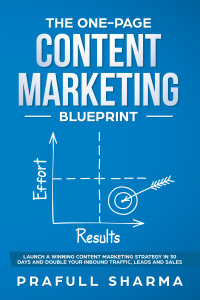Time Tested 5 Step Process for Writing High-Performing Blog Content That You Can Start Using Today
By now you know, when it comes to your business, maintaining a blog is no longer an option—it’s a necessity.
Take note however, that content marketing isn’t as simple as publishing content. You have to make sure that the information you’re delivering to users iPs useful, relevant, and engaging. This will make sure that your blog becomes a high-performing resource of credible information, where audiences will keep coming back for more.
So how exactly do you do that?
Take a look at our ultimate guideline for writing high-performing blog content.
1. Map out your content calendar
Outside of delivering well-written, relevant blog posts, top performing blogs have one thing in common: they all post consistently. They post regular content following a certain level of quality that audiences will always look forward to.
Now, to make sure that you’re providing topics that your audience wants to read, do your research. Check out competing blogs in your industry or niche and take a look at their top performing posts. Take note of these posts. In addition, based on information you have about your audience, learn about what they’re most interested in—what topics do they want to learn about, what do they want to read about?
Armed with this information, start listing all these topics down and create a calendar for your blogs. Map out when you should draft, and more importantly, publish new posts to keep your blog up to date. This will help you maintain a regular schedule for posting.
2. Make an outline for each topic
Before you dive into the actual writing, create an outline for each topic. Remember that your blog is ultimately a reflection of your brand and business, so you want to make sure that everything you want to discuss in your post is indeed relevant and useful for your audience. The best way to do that is to outline the different points that you want to address in a single post.
It doesn’t have to be a lengthy outline. It can be as basic as a three-point bullet list of the key messages that you want to deliver. This simple step can later on, help you flesh out the details you want to express in your post in a streamlined fashion—making the writing process easier.
3. Pay close attention to your introduction
There are numerous tips about how you can best start your post—keep it short, make it catchy, reel them in.
All of these are true, applicable, and effective. But here’s another piece of advice that people tend to overlook—don’t neglect the tone.
Your introduction’s tone will set the stage of your entire blog post, so my best advise is to start by being conversational. How do you do this? Ask a question, share a story, keep it relatable.
From there, you should be able to easily segue into why you want your reader to read more, and expound on the reasons that they should.
4. Consider the composition of your content
It goes without saying that your content should be well researched and exceptionally written. You should proof read your post for typos and grammatical errors, double check references, and make sure that the post reads flawlessly.
However, here’s another aspect that you should always keep in mind: composition. Remember that you’re writing content that will be consumed online. Expect your audience to be busy, distracted with short attention spans—so the more readable your post is, the better.
How do you ensure this? By keeping sentences short and simple. Don’t give your audience a wall of text to thumb through on their tablets or smartphones—break it up into multiple paragraphs, use lots of images and bullets to break up content into small, bite-sized pieces.
5. Focus on your call to action
Your post should be able to prompt your audience to take some form of positive action that will either usher them further into your conversion funnel, or at least, engage them.
This is no time for you to be vague about what you want your audience to do. If you want them to sign up for a newsletter or emailer, complete a purchase, download an ebook, visit a website, say so. And make sure all the links needed to make this easier for them is readily available.
Try this 5-step process and see how well it works to improve your blog’s performance. For more guidance on how to create consistently high-performing posts, download our handy checklist here.
If you want to speak to our content marketing specialist to discuss what we can do for your business, get in touch with us today.
Share This Story
Get the latest growth ideas, strategies, and best practices delivered to your inbox.
Quick read that helps 7000+ subscribers.









